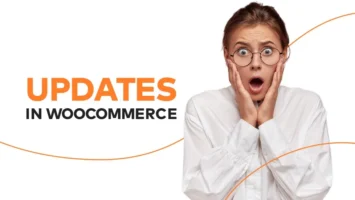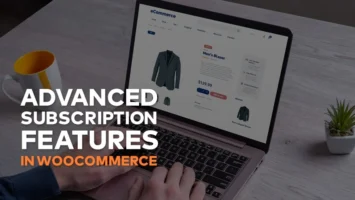Bing Ads/Microsoft Advertising vs. Google Ads: discover the advantage

While Google Ads is often the platform of choice for advertisers, Microsoft Advertising (formerly Bing Ads) has quietly emerged as an efficient and cost-effective alternative. With a multitude of distinct benefits including smaller competition, lower cost per click, detailed audience selection, and seamless integration with Microsoft platforms, Microsoft Ads presents a compelling case for advertisers. Let’s dive deeper into each of these advantages to uncover the potential of Microsoft Advertising.
The increasing interest in Microsoft Advertising
Over the past few years, interest in Microsoft Ads has seen a remarkable upswing. Despite Google remaining the go-to platform for most advertisers, the increasing recognition of Microsoft Ads unique advantages has led to a growth of its user base. This has been especially true for those facing budgetary constraints or seeking less competition, where Microsoft Ads proves to be a more cost-effective and less crowded platform than its rivals. Furthermore, the advanced targeting capabilities, including LinkedIn profile targeting offered by Microsoft Ads, have caught the attention of niche marketers. According to the newest data, the Bing search engine is used by about 100 million users every day, which is not a bad result, but still far behind Google.
The advantages of Microsoft Ads
Microsoft Ads has smaller competition
Unlike the saturated advertising arena of Google, Microsoft Ads faces smaller competition due to lesser adoption among advertisers. This lower competition translates to greater ad visibility and higher potential ad placement for the same bid as on Google. Your ads are not only less likely to be lost in the crowd, but also enjoy a better chance of appearing directly in front of your intended audience, enhancing the effectiveness of your marketing campaigns.
Lower shopping cost per click
Comparative data reveals notable differences between the cost per click (CPC) on Bing Ads and Google Ads. According to a report by WordStream, the average shopping cost per click (CPC) across all industries is $0.66 for Google Ads and $0.46 for Bing Ads, which makes Bing Ads a more affordable option, especially for small to medium-sized enterprises with tighter advertising budgets. However, there are still some industries where the CPC is more expensive for Bing Ads.
Bing audience
Bing.com users make up a particular demographic that could be beneficial for some businesses. According to Microsoft, Bing controls about 36% of the US desktop search market, and around 9% of the global search market. According to similarweb, the most common age among its users is between 25-34 years old.
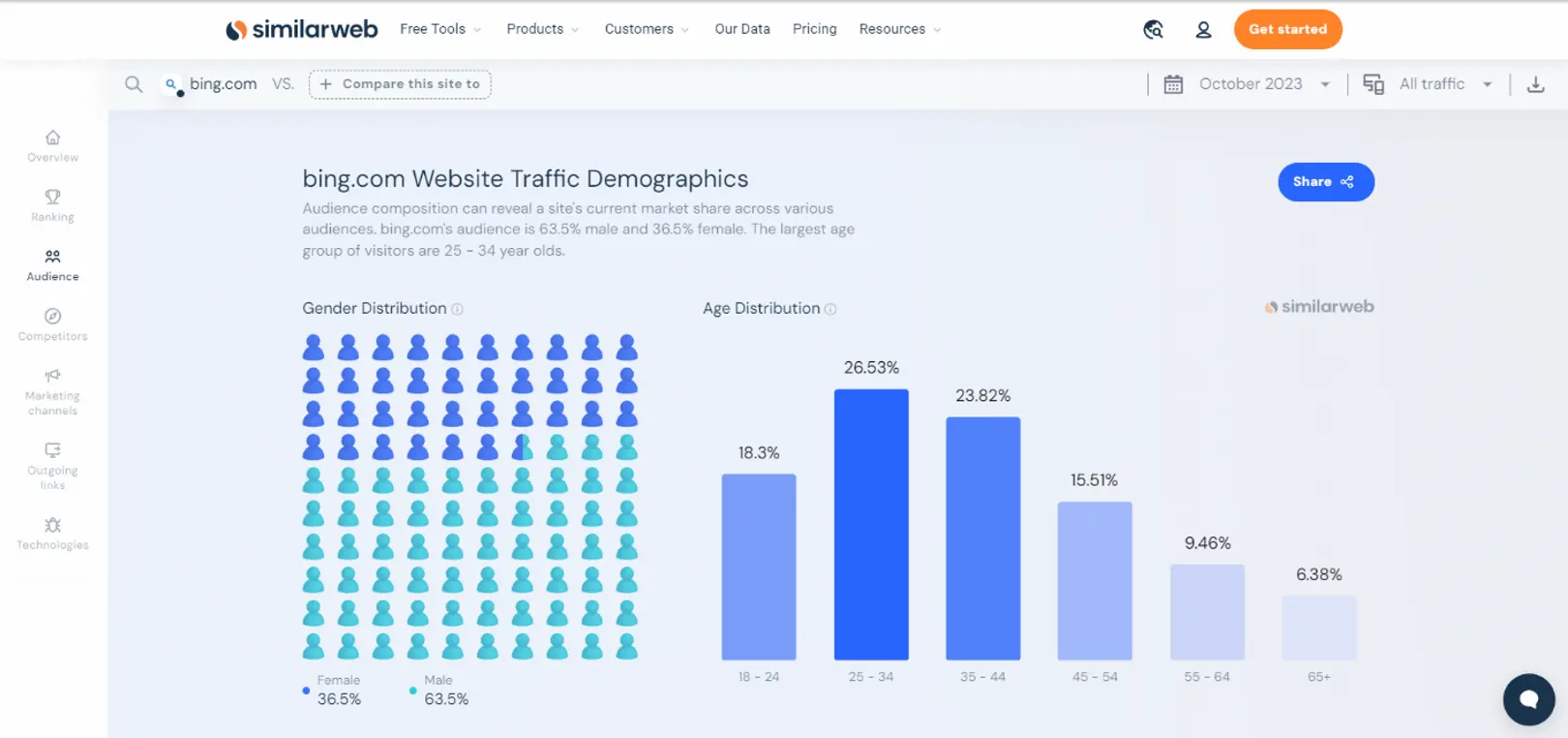
The report also shows that China surpassed the US in terms of desktop traffic. These two countries are the core audience.
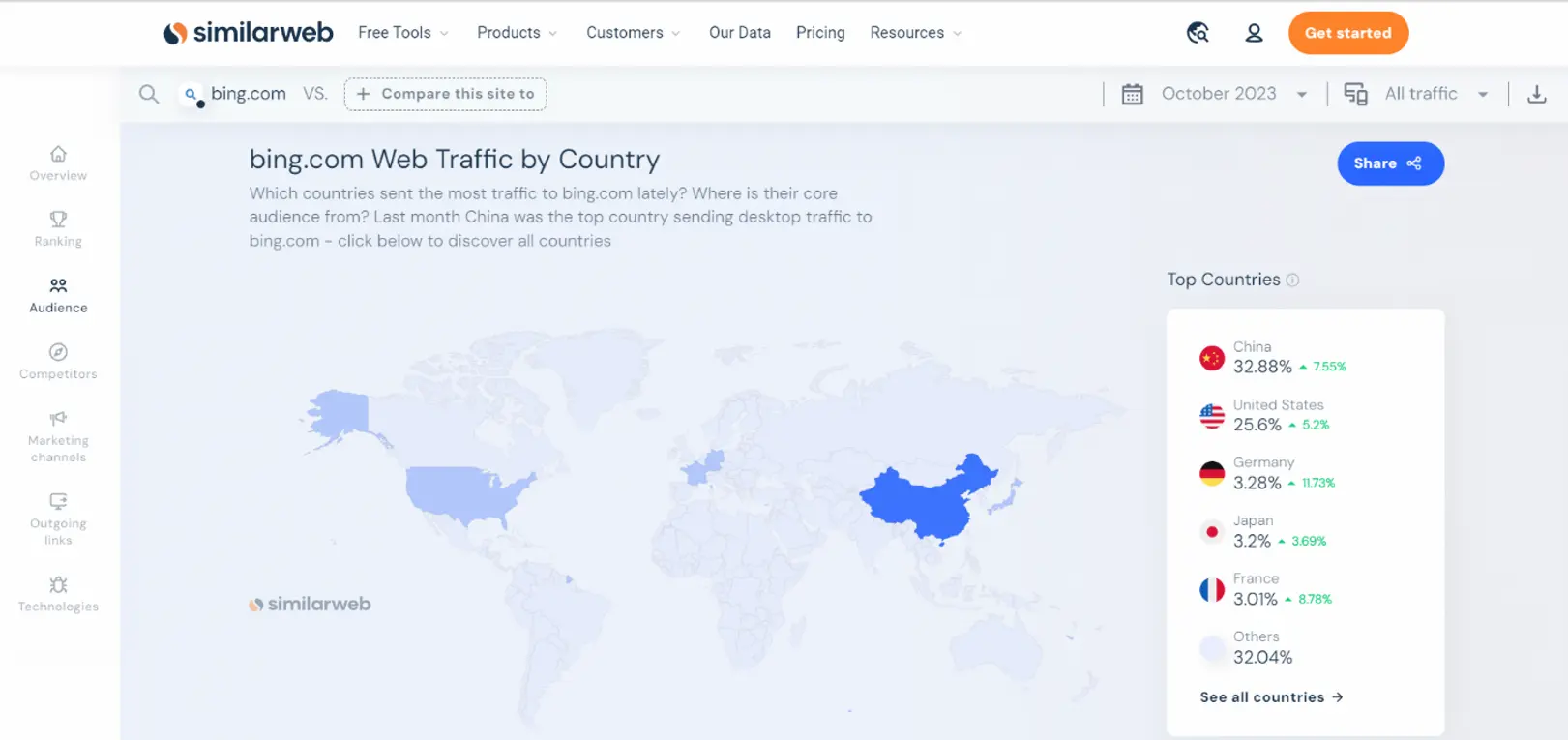
The most popular topics on Bing are video game consoles and accessories, news, programming and developer software.
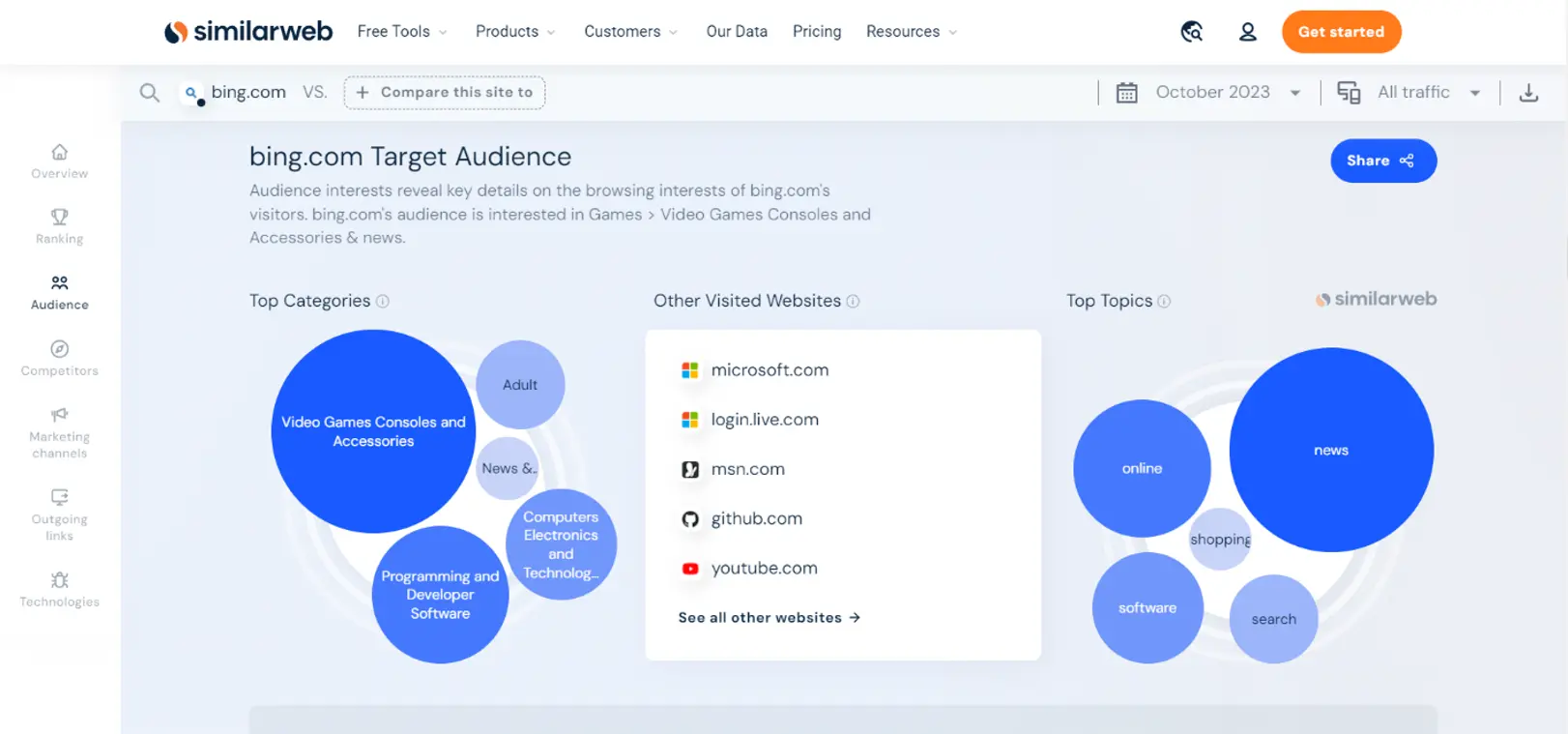
More flexibility in specific audience targeting
Microsoft Ads offers robust targeting options, which provide more flexibility to advertisers. Apart from the standard device, demographic, location, and time targeting, Microsoft Ads also offers LinkedIn Profile Targeting. This enables businesses to target specific industries, companies or job functions, providing an edge for B2B advertisers or any campaign aimed at specific professionals.
Integration with Microsoft Platforms
One prime example of integration is Microsoft’s Office 365. Advertisers can target relevant ads directly within users’ workflow while they use Outlook or interact with other Microsoft Office online products, thus increasing the reach and reducing friction for potential customers.
Particularly noteworthy is Bing’s integration within Microsoft Teams, a platform that has seen enormous growth recently. This allows for display ads to reach a substantial and continually growing business-focused audience.
Moreover, Microsoft’s digital marketplace, the Microsoft Store, has also been tightly integrated with Microsoft Ads. Here, advertisers promoting apps or digital content can easily reach Windows 10 users through ad placements in the Store itself.
The disadvantages of Microsoft Ads
Smaller reach
Without a doubt, Google dominates the search engine market, resulting in a considerably larger user pool for Google Ads. The discrepancy in user volume escalates Google’s reach significantly, providing advertisers with better exposure and wider audience targeting possibilities.
Less advanced AI functions
Another area where Microsoft Ads may falter compared to Google Ads lies in their AI capabilities. Google Ads taps into the power of machine learning extensively to analyze data trends, predict user response, optimize ads, and provide a plethora of bidding strategies. On the other hand, Microsoft Ads is still largely reliant on more traditional, manual optimization techniques, thereby potentially sacrificing efficiency and accuracy in ad performance.
Smaller database
The smaller market share of Microsoft Ads also means that it has less data to analyze, limiting the platform’s capabilities with targeted advertising. Google Ads can utilize the vast amount of data it gathers from its billions of users to tailor highly personalized and effective ad campaigns. In contrast, Microsoft Ads has a smaller set of user behavior data, which might lessen the precision of its targeting and the success rates of its campaigns.
Less support
Although Microsoft Ads provides user support, the wider availability and faster response times of Google’s tech support are preferred by many businesses. With Google Ads, advertisers have access to a larger pool of resources, community forums, case studies, and online training, which aids them in making the most of their ad campaigns. This limitation in Microsoft Ads support could pose challenges for new users or those facing issues with their ad campaigns.
Fewer updates
Moreover, Microsoft Ads may lag behind Google Ads in terms of frequent updates and innovative features. Google Ads consistently introduces new ad formats, tools, and features, keeping itself at the cutting edge of online advertising. However, Microsoft Ads’ updates and new feature releases are less frequent, potentially leaving its advertisers without the newest tools and strategies.
Microsoft Advertising campaigns and the value for businesses
Diverse reach
One of the key advantages that Microsoft Advertising offers businesses is the diversification of advertising strategies. Microsoft Advertising is not limited solely to the Bing search engine; it extends across an elaborate network of Microsoft entities including MSN, Yahoo, AOL, and other partner websites. Furthermore, advertisements can also show on Microsoft Edge, the default browser for Windows, and on Cortana, Microsoft’s voice assistant. Moreover, through syndication partnerships, Microsoft ads may appear on a range of digital platforms, thus increasing the chance of your advertisements making an impact, broadening potential audience reach, and helping businesses to avoid over-reliance on a single advertising platform.
Cost-effectiveness
Given budget constraints faced by many businesses, particularly small and mid-sized firms, cost-effectiveness is an essential factor when evaluating advertising platforms. Microsoft Advertising may have the upper hand here, given its typically lower average cost-per-click (CPC) compared to Google Ads, due to less competition on the platform. Many advertisers also report higher average positions and better ad placements due to less intense bidding competition, making Microsoft Advertising a potentially more cost-effective choice for businesses.
Targeting specific demographics
Microsoft Advertising shines when it comes to targeting specific audience demographics. Research indicates that the average Bing user is older and more affluent when compared to Google users. Businesses seeking higher-income brackets or specific age groups might find Microsoft Advertising an effective tool for reaching these target audiences.
Conclusion
In conclusion, with lower competition, cheaper CPC, and enhanced targeting and integration options, Bing Ads offer some unique advantages over Google Ads. Although Google still reigns supreme in overall reach, advertisers, particularly those with specific target demographics or lean budgets, may find Bing Ads a more cost-effective and impactful part of their advertising repertoire. It’s certainly a platform worth giving a second glance as you fine-tune your digital marketing strategy.
Looking for a group of skilled specialists to augment your business with effective digital marketing? We’re here to help, contact us.

















